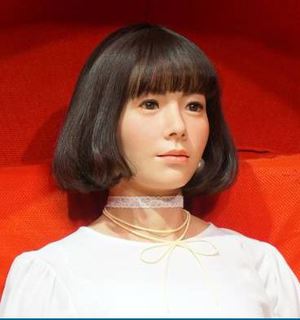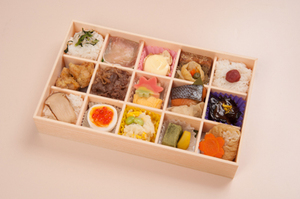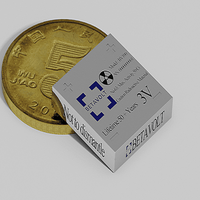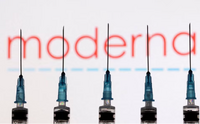2017年02月16日
「U」は22歳
パルコ池袋店は、インフォメーションコーナーのスタッフとして「U」を導入する。「U」の正面に設置したタッチパネルにコメントを入力することで、ユーザーとコミュニケーションを取れるようにする。
また、施設内で出店しているファッションブランドとコラボレーションするほか、「U」がイメージガールとして出演するプロモーションムービーを外壁の大型ビジョン(屋外広告)で放映する予定。2019年に新装オープンする渋谷店での活用も検討している。

「U」はアンドロイドルです。
博多 はつ花

また、施設内で出店しているファッションブランドとコラボレーションするほか、「U」がイメージガールとして出演するプロモーションムービーを外壁の大型ビジョン(屋外広告)で放映する予定。2019年に新装オープンする渋谷店での活用も検討している。
「U」はアンドロイドルです。
博多 はつ花

2017年02月16日
3Dプリンターを使って人間の皮膚を人工的に作る技術が開発された
スペインthe Universidad Carlos III de Madrid(UC3M)とスペインBioDan Group社などの研究グループは2017年1月23日、人間の皮膚を作製できる3Dプリンターのプロトタイプを開発したと発表した
患者への皮膚移植の用途で、欧州の複数の規制当局で審査が進められているという。化粧品や化学製品、薬剤の評価に使う工業製品への応用も視野に入れている。
この技術では、バイオインク(Bioinks)と呼ぶ人間の細胞由来の素材を使って、人間の皮膚の構造や機能を再現した組織を3Dプリンターで作製する。表皮とその内側にある真皮、真皮の構成要素でコラーゲンを作りだす線維芽細胞といった、皮膚の各構成要素を再現可能だ。細胞などの生体材料をどのように混合し、それらの機能を劣化させることなく正しく堆積させるかなどにノウハウがあるといい、堆積工程はコンピューターで制御する。
想定する利用形態は大きく2つ。1つは、重度のやけどを負った患者などの細胞を基に、自家移植用の皮膚を作製するという形態。もう1つは、工業製品の評価などに使える人工皮膚を細胞のストックから大量生産するという形態である。後者では化粧品や化学製品、薬剤の評価において、動物を使う評価手法が禁じられているケースなどでの利用が想定される。
今回の成果は科学誌「Biofabrication」の電子版に掲載された。研究グループは今後、皮膚以外の人間の生体組織を3Dプリンターで作製する研究も進めるという。
Significant progress has been made over the past 25 years in the development of in vitro-engineered substitutes that mimic human skin, either to be used as grafts for the replacement of lost skin, or for the establishment of in vitro human skin models. In this sense, laboratory-grown skin substitutes containing dermal and epidermal components offer a promising approach to skin engineering. In particular, a human plasma-based bilayered skin generated by our group, has been applied successfully to treat burns as well as traumatic and surgical wounds in a large number of patients in Spain. There are some aspects requiring improvements in the production process of this skin; for example, the relatively long time (three weeks) needed to produce the surface required to cover an extensive burn or a large wound, and the necessity to automatize and standardize a process currently performed manually. 3D bioprinting has emerged as a flexible tool in regenerative medicine and it provides a platform to address these challenges. In the present study, we have used this technique to print a human bilayered skin using bioinks containing human plasma as well as primary human fibroblasts and keratinocytes that were obtained from skin biopsies. We were able to generate 100 cm2, a standard P100 tissue culture plate, of printed skin in less than 35 min (including the 30 min required for fibrin gelation). We have analysed the structure and function of the printed skin using histological and immunohistochemical methods, both in 3D in vitro cultures and after long-term transplantation to immunodeficient mice. In both cases, the generated skin was very similar to human skin and, furthermore, it was indistinguishable from bilayered dermo-epidermal equivalents, handmade in our laboratories. These results demonstrate that 3D bioprinting is a suitable technology to generate bioengineered skin for therapeutical and industrial applications in an automatized manner.
Traditional HAKATA lunch boxes.
はつ花
Yukari Furuta

患者への皮膚移植の用途で、欧州の複数の規制当局で審査が進められているという。化粧品や化学製品、薬剤の評価に使う工業製品への応用も視野に入れている。
この技術では、バイオインク(Bioinks)と呼ぶ人間の細胞由来の素材を使って、人間の皮膚の構造や機能を再現した組織を3Dプリンターで作製する。表皮とその内側にある真皮、真皮の構成要素でコラーゲンを作りだす線維芽細胞といった、皮膚の各構成要素を再現可能だ。細胞などの生体材料をどのように混合し、それらの機能を劣化させることなく正しく堆積させるかなどにノウハウがあるといい、堆積工程はコンピューターで制御する。
想定する利用形態は大きく2つ。1つは、重度のやけどを負った患者などの細胞を基に、自家移植用の皮膚を作製するという形態。もう1つは、工業製品の評価などに使える人工皮膚を細胞のストックから大量生産するという形態である。後者では化粧品や化学製品、薬剤の評価において、動物を使う評価手法が禁じられているケースなどでの利用が想定される。
今回の成果は科学誌「Biofabrication」の電子版に掲載された。研究グループは今後、皮膚以外の人間の生体組織を3Dプリンターで作製する研究も進めるという。
Significant progress has been made over the past 25 years in the development of in vitro-engineered substitutes that mimic human skin, either to be used as grafts for the replacement of lost skin, or for the establishment of in vitro human skin models. In this sense, laboratory-grown skin substitutes containing dermal and epidermal components offer a promising approach to skin engineering. In particular, a human plasma-based bilayered skin generated by our group, has been applied successfully to treat burns as well as traumatic and surgical wounds in a large number of patients in Spain. There are some aspects requiring improvements in the production process of this skin; for example, the relatively long time (three weeks) needed to produce the surface required to cover an extensive burn or a large wound, and the necessity to automatize and standardize a process currently performed manually. 3D bioprinting has emerged as a flexible tool in regenerative medicine and it provides a platform to address these challenges. In the present study, we have used this technique to print a human bilayered skin using bioinks containing human plasma as well as primary human fibroblasts and keratinocytes that were obtained from skin biopsies. We were able to generate 100 cm2, a standard P100 tissue culture plate, of printed skin in less than 35 min (including the 30 min required for fibrin gelation). We have analysed the structure and function of the printed skin using histological and immunohistochemical methods, both in 3D in vitro cultures and after long-term transplantation to immunodeficient mice. In both cases, the generated skin was very similar to human skin and, furthermore, it was indistinguishable from bilayered dermo-epidermal equivalents, handmade in our laboratories. These results demonstrate that 3D bioprinting is a suitable technology to generate bioengineered skin for therapeutical and industrial applications in an automatized manner.
Traditional HAKATA lunch boxes.
はつ花
Yukari Furuta



 高級食材、調理器具専門店
高級食材、調理器具専門店




















